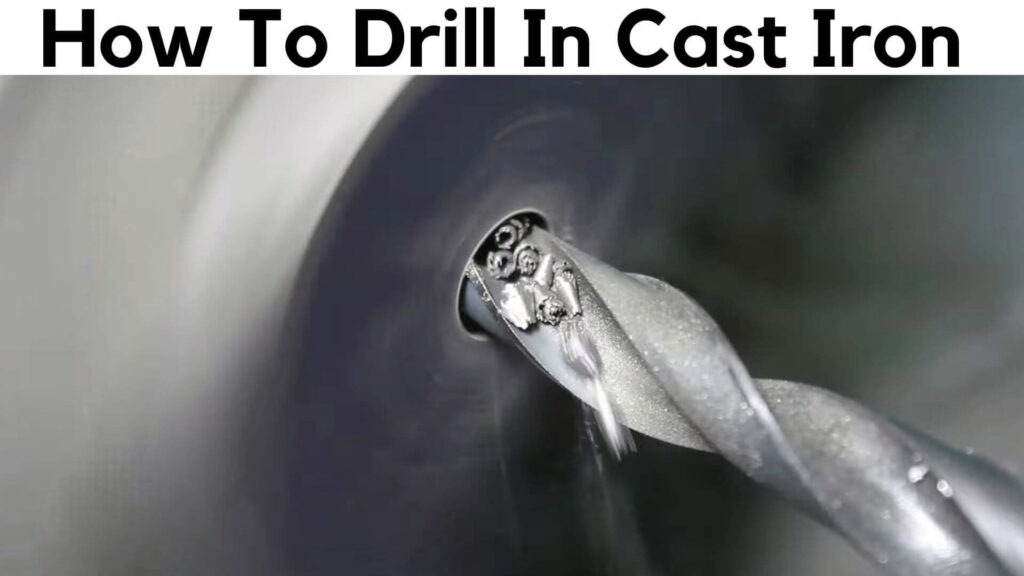Cast iron is a strong metal that is used for many different things. You might worry about breaking a drill bit if you need to attach something to it or take pressure off it. But it’s not nearly as complicated as you might think.
You can use any metal drill bit to make a hole in cast iron. Cast iron is much more fragile than other metals and is easy to drill into. Start drilling slowly to keep the drill bit from getting too hot and wearing out from too much friction.
It’s brittle but strong, so don’t worry about it breaking. Cast iron drilling produces few metal shavings or debris. Other metals are messier. New metal drillers should start with cast iron.
To ensure a hassle-free Drilling experience, remember these helpful hints and procedures. You’ll be glad you prepared for your project’s success.
Table of Contents
Is it Possible to Drill Into Cast Iron?
Yes! It is possible to drill a hole through this hard metal. You must have the right tools and follow the proper steps. If you’re ready and follow our guide to drilling, it won’t be hard to drill through cast iron.
What Tools Are Required To Drill Cast Iron?
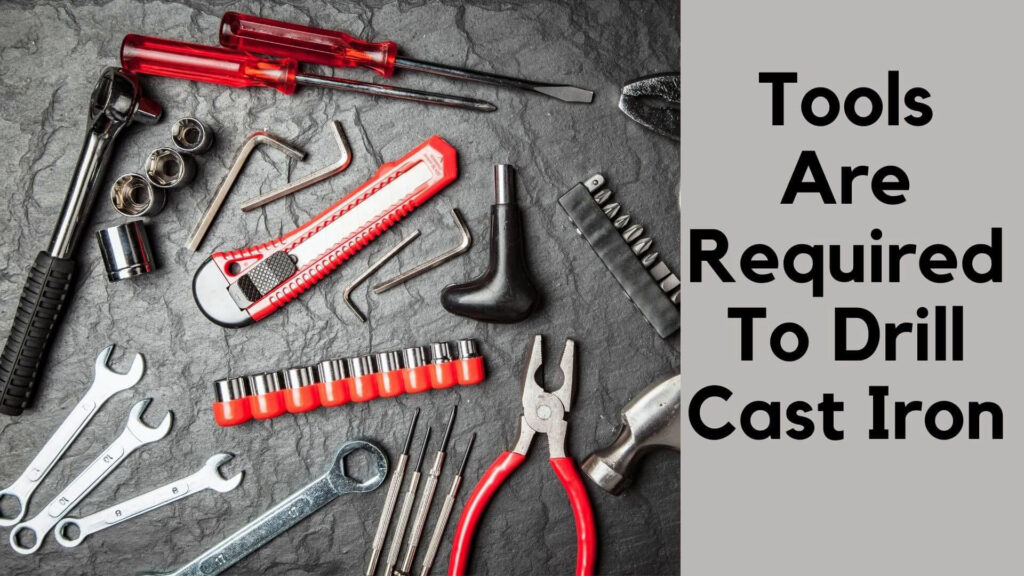
Cast iron can be drilled through with nearly any drill bit, including those found in the discount aisle.
Cast iron does not resist the twisting motion of a drill bit, so you can quickly drill through it. You will only have to contend with debris.
To make the task even more manageable, reach for a drill bit coated with black oxide. They are durable, and you won’t find a ton of metal shavings embedded in the cast iron when you’re finished.
You can also use a cobalt steel drill bit, which offers increased durability. It is nearly impossible to break a cobalt steel twist bit on cast iron.
Either of these substances will cut through metal without quickly becoming dull.
You can go further by purchasing drill bits coated with titanium nitride to resist heat and friction. Even if the cast is not hot, friction will quickly generate heat. It is believed that drill bits coated with TiN will last six times longer than standard bits.
Here is a list of the necessities:
- Work gloves of leather or canvas construction
- Earplugs
- Drill
- Drill bits
- Goggles
- Permanent marker
- Lubricant/ cutting fluid
- Scrap wood pieces
- Old rags
- Hammer for a center punch
- Clamps
- Nails/fasteners
Check Also: The Right Size Drill Bit For 1/2″ Concrete Anchors?
How Do I Drill Into Cast Iron?
There are a few different ways to drill a hole in cast iron.
- The first is to use a metal drill bit. This bit has a thick shank and large flute, which will make it easier to grip the metal and spin.
- The second way to drill a hole in cast iron is with a Hole Saw. This saw has many small teeth that can cut through the metal quickly.
- The third way to drill a hole in cast iron is with an Electric Drill. An electric drill has variable speed settings, so you can control the amount of friction that is generated. This makes it easier to drill into the more rigid materials.
- The fourth way to drill a hole in cast iron is with an Air Drill. An air drill doesn’t use any physical contact with the material, so it’s ideal for softer materials like cast iron.
- The fifth way to drill a hole in cast iron is with a Hammer and Nail. Hammering and nailing can be very effective when drilling into rigid materials, like cast iron. Just be sure to use the right tools for the job and take precautions to prevent damage.
Check Also: how to make a hole in hard plastic without a drill
What is the Best Drill Bit For Drilling in Cast Iron?
There is no one-size-fits-all answer to this question, as the best drill bit for drilling in cast iron will depend on the material you are drilling through, the size of the hole you are trying to make, and your particular drill.
However, some of the more common drill bits used to drill in cast iron include metal drill bits, carbide drill bits, and spiral drill bits.
How to Drill a Hole in Cast Iron with a Metal Drill Bit
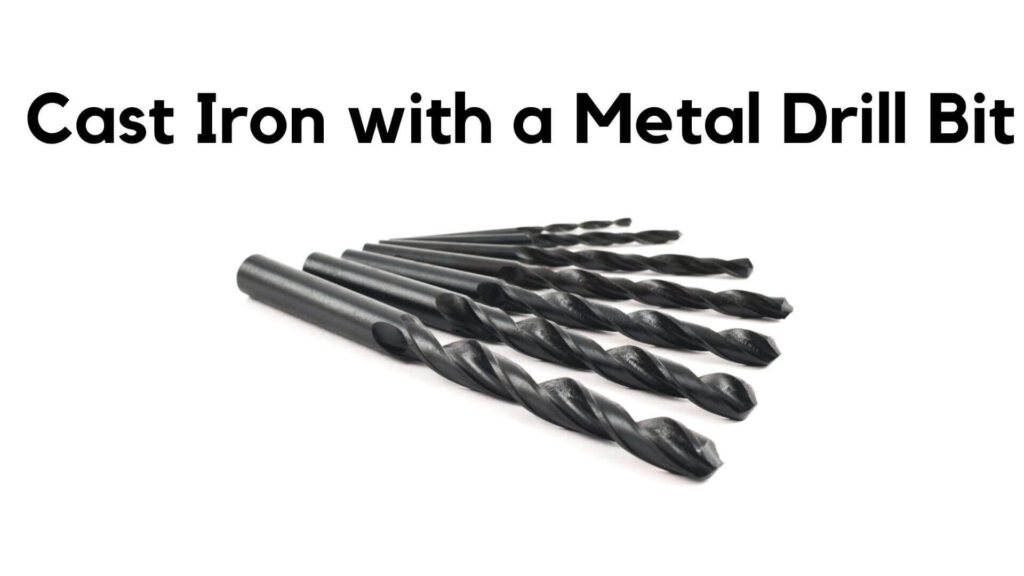
If you are drilling a hole in cast iron with a metal drill bit, you will need to start by prepping the material. This means grinding or sanding the area where you will drill to make sure the bit can grip the fabric. Once the site is prepared, you can use your metal drill bit to make the hole.
Check Also: can you drill through carbon fibre
How to Drill a Hole in Cast Iron with a Carbide Drill Bit
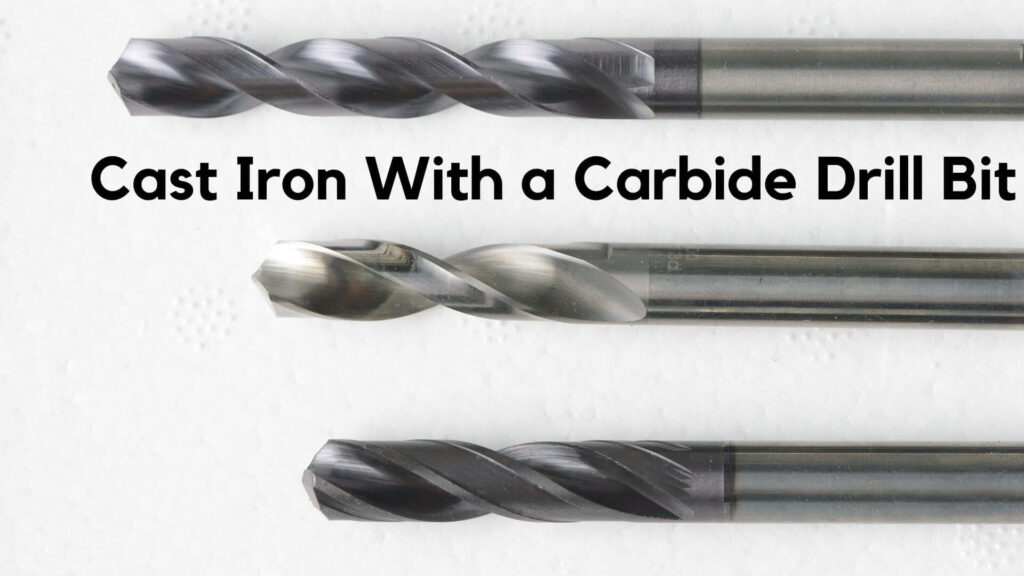
If you are drilling a hole in cast iron with a carbide drill bit, you will need to start by prepping the material. This means grinding or sanding the area where you will drill to make sure the bit can grip the fabric. Once the site is prepared, you can use your carbide drill bit to make the hole.
How to Drill a Hole in Cast Iron with a Spiral Drill Bit
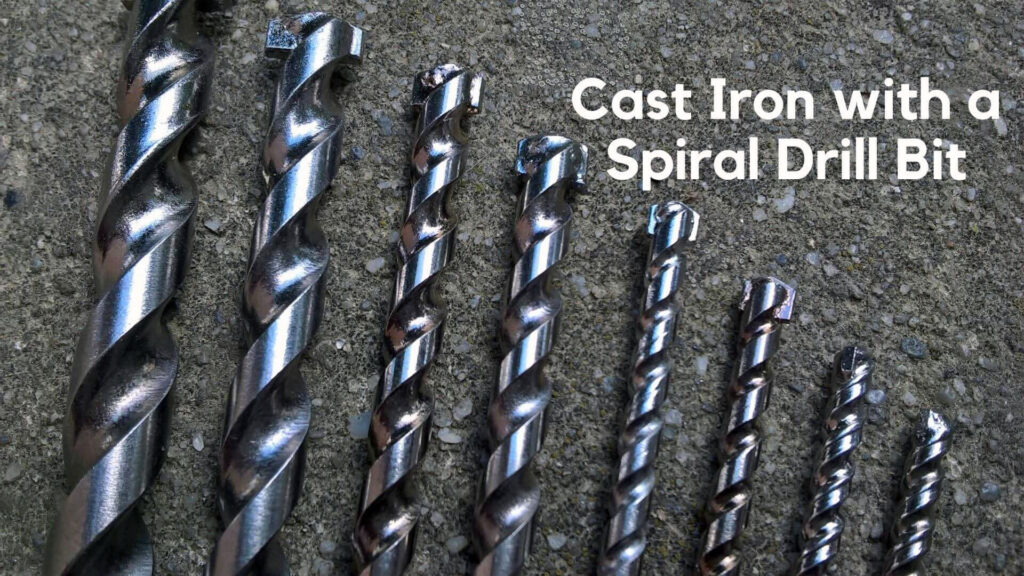
If you are drilling a hole in cast iron with a spiral drill bit, you will need to start by prepping the material. This means grinding or sanding the area where you will drill to make sure the bit can grip the fabric. Once the site is prepared, you can use your spiral drill bit to make the hole.
Check Also: how to drill through metal studs
How to Drill a Hole in Cast Iron Without Ruining It
The best way to drill a hole in cast iron without ruining it is to start by drilling slowly. This will help prevent overheating and excess friction that can damage your drill bit.
Once you have drilled the hole, you can use a drill bit designed for cast iron to make the spot more accurate.
Once you have drilled the hole, you can then use a drill bit designed for cast iron. Cast iron is a relatively soft metal, so the drill bit will need to be made from a material that is also soft enough to allow for accurate drilling.
The type of drill bit that you use will also depend on the size of the hole that you are trying to make. For smaller holes, a straight bit may be sufficient. For larger holes, however, a more pointed bit may be necessary.
Be careful not to over-drill or damage the cast iron. Use gentle pressure and take your time when drilling so that you don’t end up ruining your project.
How to Drill a Hole in Cast Iron Bathtub?
If you are drilling a hole in a cast iron bathtub, the best bit for the job is a metal drill bit. Cast iron is much more brittle than other metals, so you will need to take care not to overheat your drill bit or apply too much pressure.
Start drilling slowly and then increase the speed as you get closer to the target area. Be sure to use a light touch when drilling to don’t damage the bathtub.
How to Drill a Hole in Cast Iron Sink?
Cast iron sinks are typically drilled using a carbide drill bit. The size of the hole you are trying to make will determine the size of the drill bit you will need.
You will also need to take into consideration the depth of your sink, as well as its surface area. Begin by marking your hole on the sink with a pencil or pen, and then use your measurements to choose your drill bit.
Wear protective gear when drilling in cast iron, including eye protection and protective gloves.
How to Drill a Hole in Cast Iron Pot?
If you are drilling into an empty cast iron pot, start by outlining the desired hole with a pencil or pen. Once you have made your outline, use your measurements to choose your drill bit from those listed above for drilling in castiron baths, sinks, and pots.
When drilling into empty pots or pans, it is essential not to overheat your drill bit or apply too much pressure; otherwise, you could damage the pot or pan.
What are the Benefits of Drilling into Cast Iron?
Drilling into cast iron is a complicated process. It requires a lot of time and patience. However, it can be gratifying and beneficial if done correctly.
Benefits:
- Cast Iron is a solid material that can withstand high temperatures
- It is an excellent conductor of heat, which means that food cooks evenly.
- It has superior heat retention properties, making it perfect for cooking in ovens and grills.
Drilling cast iron is a way to create holes in cast iron. It is often done to increase cast iron products’ surface area and allow for connections that are not otherwise possible.
What are the Risks of Drilling into Cast Iron?
The process of drilling into cast iron can be a tricky one. It is essential to know the risks before you start drilling.
Many risks come with drilling into cast iron, such as the possibility of cracking or breaking the cast iron.
Cast Iron can be brittle and break easily, so it is essential to take caution when drilling into it.
Another risk when drilling into cast iron is that the metal will spall, breaking off into thin pieces and flying in all directions.
This could result in injury for those nearby or those handling the drill bit.
Finally, there is a risk of getting metal chips on your work surface and having them contaminate your work area with metal dust and chips.
Helpful Hints and Advice

Safety is essential, but so is the ease of use. By following these suggestions, you can get the best of both worlds. Try them out and see which one gets you the results you’re looking for.
You can use the extra cutting fluid while you drill. When you use a drill bit over and over, it gets warmer. If you’re going to use it for a long time, wipe away the dust and reapply the oil.
Start by slowing down the speed. The more friction there is, the more heat there is. When you drill more slowly, you can get through cast iron without wearing out your drill bits or getting too hot. It would help if you never went faster than 3000 RPM, but you can do less than 1000 RPM.
If you want to drill a big hole, step bits can help. If you use one, be careful not to move too quickly, or you could make a much too big hole.
When you use a drill bit on any metal, keep an old rag nearby. You’ll have to clean up the metal shavings and any extra cutting fluid. As many DIYers have done, sharp pieces can hurt you if you wipe them on your pants or shirt.
Always use a permanent marker to mark your surface first. This indicator will show you exactly where you want to start drilling instead of leaving you to guess.
Don’t forget to check how wide the thing you are drilling into is! If you go too far, you might hurt whatever is behind it. It would help if you always had a ruler and a leveler in your tool kit to avoid these problems.
Lastly, never drill into loose cast iron. If it’s not already attached to something, it has to have vices.
FAQs About How To Drill In Cast Iron
What is a good drill bit for drilling into cast iron?
Cast iron is solid metal and can be challenging to drill through. A good drill bit for drilling into cast iron has a thick shank, so the bit can grip the metal and spin more easily.
Additionally, the bit should have a large flute so it can create many small holes in the same spot, which will make it easier to remove material.
What type of drill bit should you use to drill into cast iron?
The type of drill bit you use depends on your drilling material. For example, a twist drill is recommended if you’re drilling into wood. If you’re drilling into metal, a high-quality steel bit is recommended. And if you’re drilling into cast iron, a high-speed steel bit is recommended.
How deep should you drill into cast iron?
Cast iron can come in various thicknesses, which means that the depth of the hole will vary accordingly. It would help if you drilled into cast iron until you hit the metal, usually about half an inch.
How do you know when to stop drilling in cast iron?
It is essential to know when to stop drilling when drilling in cast iron. The goal of drilling is to create a hole or space for the screwdriver, so be sure to stop before the drill bit breaks through the other side of the material.
If you are drilling a hole for an anchor bolt, it is best to prepare at least 3/4 inches deep into the material. If you are using a screwdriver bit, it’s best to stop when there is about 1 inch left on each side of your hole.
This section aims not to teach people how they should drill in cast iron but rather how they can tell when they should stop drilling to avoid breaking through the other side and ruining their work.
Last Word
Cast iron is easy to drill. It is a metal that is easy to break and doesn’t have much junk.
This material is excellent for home projects because it can handle the heat and is challenging. You can use it and drill into it without worrying that it will break.
Here are a few essential things to remember from this post:
- you can drill cast iron with any drill bit for metal.
- If you are drilling many holes, don’t forget to use cutting fluid.
- When drilling into any surface, you should always use a clamp or vice.
- You should wear safety glasses, gloves, and clothing.
- Remember to use a marker, a center punch, and a hammer to mark the spot.
- Start slowly to avoid making too much friction, heat, and wear.

Hey, I am Shihab Uddin, I’m a huge fan of DIY crafts. My workshop is where I spend most of my spare time, and I’m always working on some project. To that end, I’d like to share some of my knowledge and experience with you in power tools, woodworking, and other specialized materials fabrication.
I will guide you with genuine knowledge that can assist you with deciding whether a drill is appropriate according to your requirements or not. If you want to find the best drill and know which type of drill is most suited for your needs, then I can guide you with my expertise. My passion lies in helping others find the correct products they need at an affordable price.

